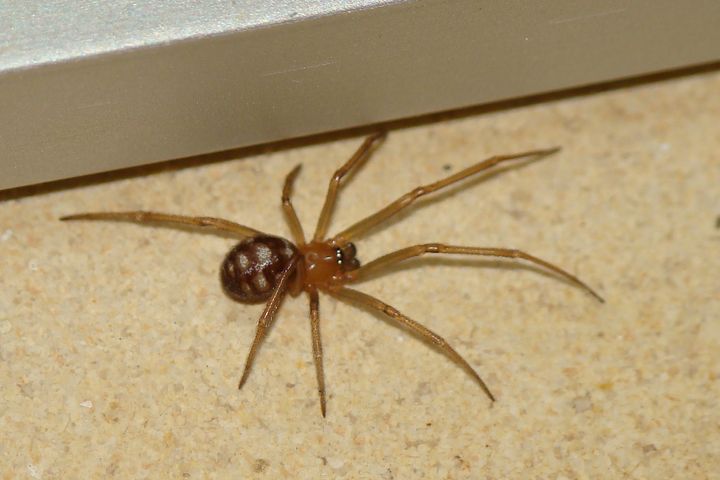
If the news of the UK’s frankly menacing tick population hasn’t panicked you enough, allow me to introduce you to new horrors: the false widow spider, which has been dubbed “the UK’s most dangerous [spider] species”, is apparently about to start showing up more often in peoples’ homes.
But just how dangerous is it? Well, the creepy-crawly is nowhere near as scary as its Australian cousin, the potentially deadly black widow spider. In fact, the false widow’s poison is around 1,000 times weaker than its relative’s, and none of the varieties of false widow spiders in the UK are going to kill you.
“Although false widows do have a venomous bite, the venom is not particularly potent. Usually the only symptom is pain at the site which may radiate away from the bite. It ordinarily lasts between one and 12 hours, and rarely for more than 24 hours,” the Natural History Museum shares.
And Professor Adam Hart, ecologist, conservation scientist, entomologist, and the University of Gloucestershire’s professor of Science Communication, told HuffPost UK that “As we start heading towards the end of the summer and into autumn we do tend to notice spiders being more active, especially in our homes. We might start to see male house spiders walking around looking for females for example. False widows get a lot of negative press, and they can bite us, but they’re not really a problem.”
We thought we’d explain what the false widow spider looks like, and how to avoid getting bitten by one (again, it’s usually only a wasp sting level of pain, but why not avoid it if you can?).
The species look similar to one another
There are six species of false widow spider in the UK. “They are black or brown in colour, rotund, and small – growing up to about the size of a small fingernail. The maximum body length of an adult female is 15mm. Though males are more likely to bite, especially when they’re out looking for mates,” the Natural History Museum says.
“All species have distinctive sets of markings on their abdomens: they have a narrow white or lighter band around the front of the abdomen towards their head, and also other markings that vary by species. However, all of these marks can be variable, faded, or missing, especially in adult females.”
You can also check for their distinctive webs if you’re not sure about the spider itself. Keep an eye out for a “tangle of criss-cross threads” which can become quite dense in the centre if left undisturbed.
Why do false widow spiders come out later in the year?
Throughout the warmer months, “spiders like dark cool spaces, so chances are they’ll be in sheds, garages, trees and the like,” according to Bath and North-East Somerset Council.
They’re likely to become more visible later on in the summer and towards the beginning of autumn, as they attempt to leave the cooler weather behind them and head indoors to your nice cosy home, where they have grand plans to hibernate.
Some news reports suggest their movements may increase with all the wet, cooler weather we’ve been having. Professor Hart also says they’re more active in the colder weather, but says it’s a mistake to confuse the extra activity of false widow spiders with an explosion in their population ― ”They are always there - we just tend to notice them more as we move into autumn,” he told HuffPost UK.
What if it bites me?
The spider is only likely to attack if it senses danger. “Males are more prone to biting. But this is only because they leave the nest in search of a mate, often venturing indoors looking for females. They are only known to bite when provoked or trapped against skin,” the Natural History Museum says.
To prevent being bitten, simply ignoring the spider is your best bet. Professor Hart told HuffPost UK that “It is best not to handle them directly but there is no reason to think that there will be a sudden wave of them.” He added that “Spiders are incredibly important in the wider ecosystem and we should do all we can to look after them - which includes not squashing them!”
If you have been bitten, an ice pack should help with the pain. Antihistamines can also help to alleviate the swelling.
There is a risk of allergic reaction, as with any spider bite. So, if the bite becomes severely swollen or ulcerous, seek medical help from your GP or A&E department.